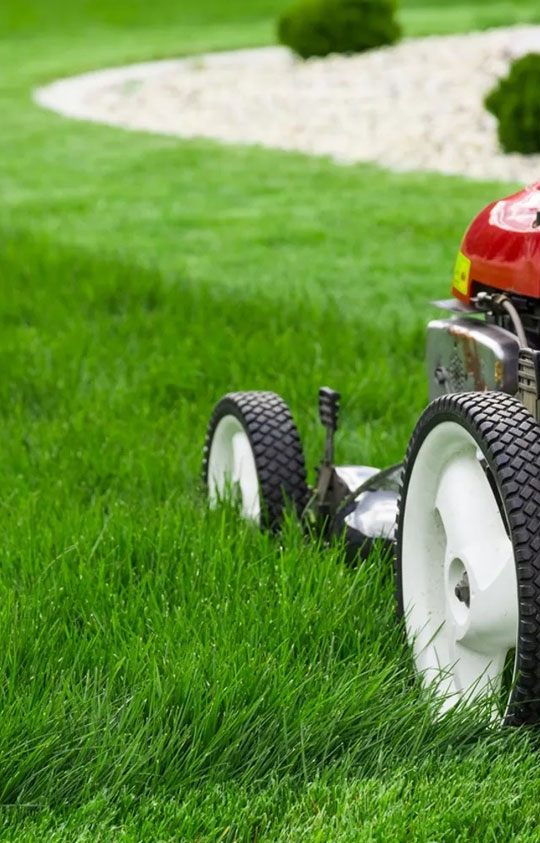Lawn Renovation Services
There are several steps to achieving a Beautiful, Healthy Lawn. At Rockingham Lawn Renovations, we are highly trained in all aspects of Installing, Repairing & Maintaining Lawns. Below are the steps we take to ensure your Lawn is the best it can be.
Weed Removal
Weed removal is an essential practice in maintaining the health and aesthetics of gardens, lawns, and agricultural fields. Unwanted weeds not only compete with desirable plants for nutrients and water but can also harbor pests and diseases, leading to reduced crop yields and compromised ecosystem balance. Various methods of weed removal, including manual pulling, mulching, herbicide application, and mechanical cultivation, are employed based on the scale of infestation and the specific needs of the environment. Adopting sustainable and eco-friendly weed removal practices not only promotes biodiversity but also ensures the long-term sustainability of the surrounding ecosystem, allowing for the flourishing of desired vegetation and the overall enhancement of the landscape.
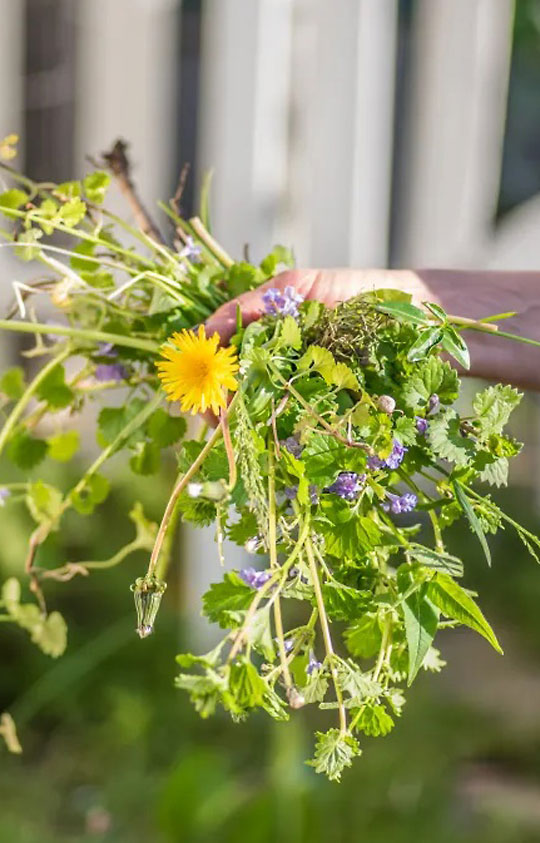
De-thatching
Dethatching / Vertimowing, also known as scarification, is a vital horticultural practice aimed at maintaining healthy and lush lawns. Over time, lawns can accumulate a layer of dead grass, roots, and other organic debris known as thatch, which can impede water, air, and nutrient penetration into the soil, hindering grass growth. Dethatching involves using specialized equipment, such as dethatching rakes or machines, to remove this layer and promote better grass growth. By dethatching regularly, typically once every one to three years, depending on the lawn’s condition, gardeners and homeowners can enhance water absorption, encourage strong root development, and improve overall lawn health, resulting in a vibrant, well-manicured lawn that enhances the appeal of any outdoor space.
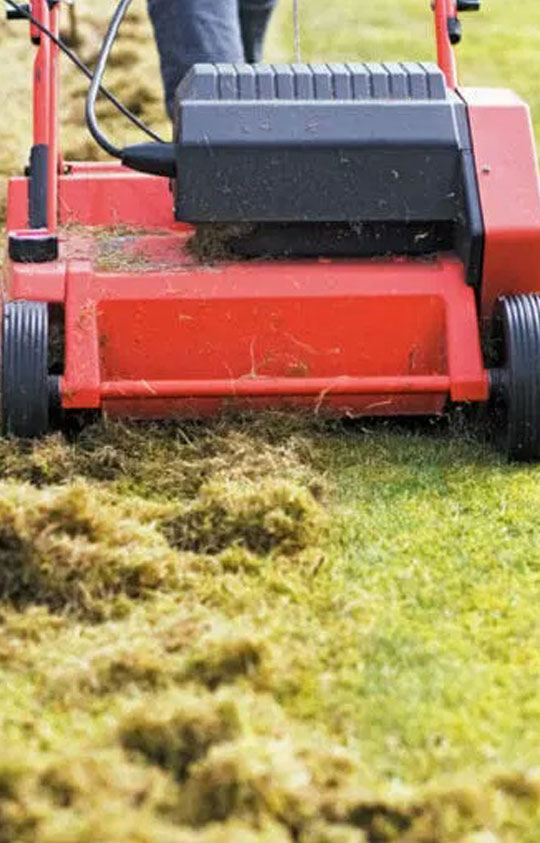
Aeration
Aeration is a fundamental lawn care technique designed to improve soil structure and promote healthier, more resilient grass growth. Over time, soil can become compacted due to foot traffic, heavy machinery, and other external factors, limiting the movement of air, water, and nutrients within the soil. Aeration involves perforating the soil with small holes, either by using spikes or by removing small soil cores, allowing better airflow and water penetration. This process alleviates compaction, enhances root development, and encourages the proliferation of beneficial microorganisms within the soil.
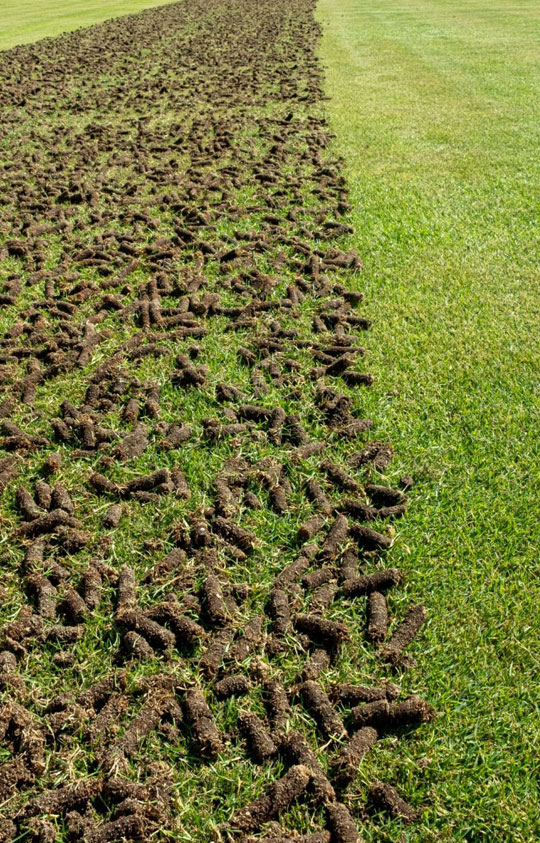
Wetting Agent
Wetting agents, also known as surfactants, play a crucial role in lawn care by enhancing water penetration and distribution throughout the soil. Lawns can suffer from uneven moisture distribution due to factors like compacted soil, thatch buildup, or hydrophobic conditions. Wetting agents work by reducing the surface tension of water, allowing it to spread more easily and be absorbed deeper into the soil profile. This helps to prevent dry patches and ensures a more uniform distribution of water to the grassroots, promoting even growth and reducing the risk of drought stress or waterlogging. Additionally, wetting agents can improve the efficiency of irrigation systems, enabling homeowners and landscapers to conserve water while maintaining a healthy, vibrant lawn that thrives even under challenging environmental conditions.

Fertilizing
Fertilizing a lawn is a key practice in maintaining a lush and healthy turf. Lawn grasses require essential nutrients, such as nitrogen, phosphorus, and potassium, to support vigorous growth and overall vitality. Fertilizers provide these nutrients in balanced proportions, encouraging strong root development, vibrant color, and increased resistance to pests and diseases. Proper timing and application are crucial for effective fertilization, with different grass types and climate conditions influencing the specific needs of the lawn. Regular fertilization, typically in spring and autumn, helps sustain consistent growth and resilience, while avoiding excessive use that could lead to environmental pollution. By employing responsible and informed fertilization practices, homeowners and landscapers can nurture an attractive and sustainable lawn that serves as a beautiful outdoor oasis for relaxation and recreation.
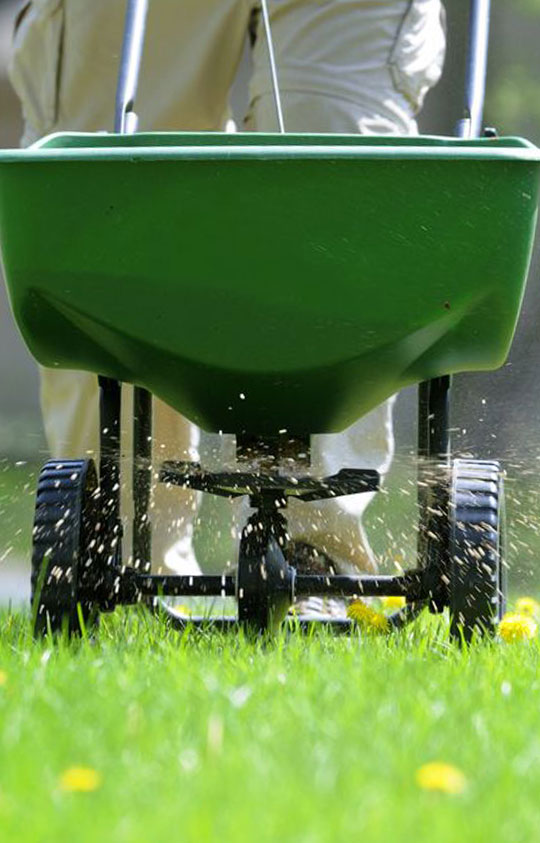
Top Dressing
Top dressing a lawn is a beneficial lawn care practice that involves applying a thin layer of nutrient-rich material, such as compost, sand, or a mix of soil and organic matter, to the surface of the grass. This process helps to level out minor surface irregularities, improve soil structure, and enhance the overall health of the turf. Top dressing provides essential nutrients to the grass, promotes microbial activity, and aids in retaining moisture, resulting in stronger root growth and increased resistance to drought and other stresses. Additionally, it can help to reduce thatch buildup and encourage a denser, more vibrant lawn. By carrying out top dressing during the growing season, homeowners and gardeners can rejuvenate and revitalize their lawns, ensuring a more resilient and visually appealing landscape that thrives for years to come.
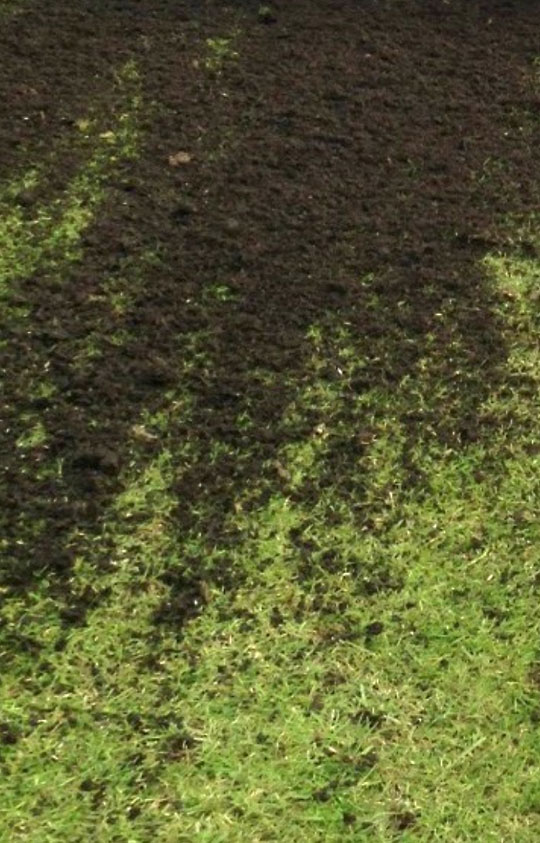
Watering
Watering a lawn is a critical aspect of lawn care that directly influences the health and appearance of the turf. Proper and consistent watering is essential to keep the grass hydrated, especially during periods of drought or high temperatures. Overwatering can lead to shallow root growth and promote fungal diseases, while underwatering can cause the grass to become stressed and turn brown. To maintain a lush and healthy lawn, it is crucial to water deeply and infrequently, allowing the soil to absorb water to a depth of 6 inches or more. Early morning or late afternoon is the best time to water, as it minimizes water loss due to evaporation. Utilizing water-efficient irrigation methods, such as drip systems or soaker hoses, can help conserve water while ensuring the lawn receives adequate moisture for optimal growth. Regular monitoring and adjusting of watering schedules based on weather conditions and the lawn’s needs are essential to achieving a beautiful and thriving lawn.
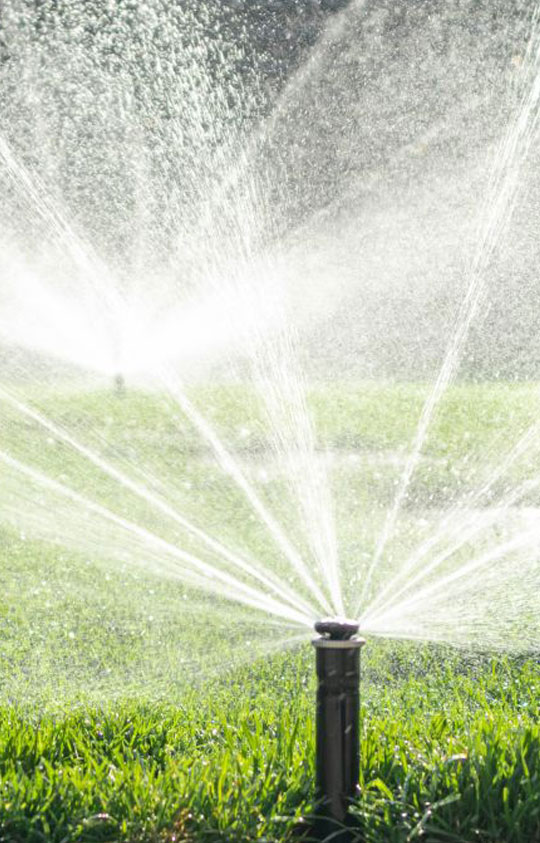
Mowing
Mowing a lawn is a fundamental practice in maintaining a well-kept and healthy turf. Regular mowing helps control the height of the grass, encourages lateral growth, and promotes a dense, lush appearance. To achieve the best results, it is crucial to adhere to the “one-third rule,” which states that only one-third of the grass blade should be removed with each mowing session. Proper mowing height varies based on the grass type, but generally, a higher cut is beneficial as it allows for stronger root development and enhances the lawn’s ability to withstand stressors like drought and pests. It is essential to keep mower blades sharp to ensure clean cuts and avoid damaging the grass. Additionally, alternating the mowing pattern can help prevent soil compaction and reduce the risk of developing ruts. By adopting consistent and informed mowing practices, homeowners and landscapers can maintain an attractive and resilient lawn that becomes a source of pride and enjoyment in any outdoor space.
